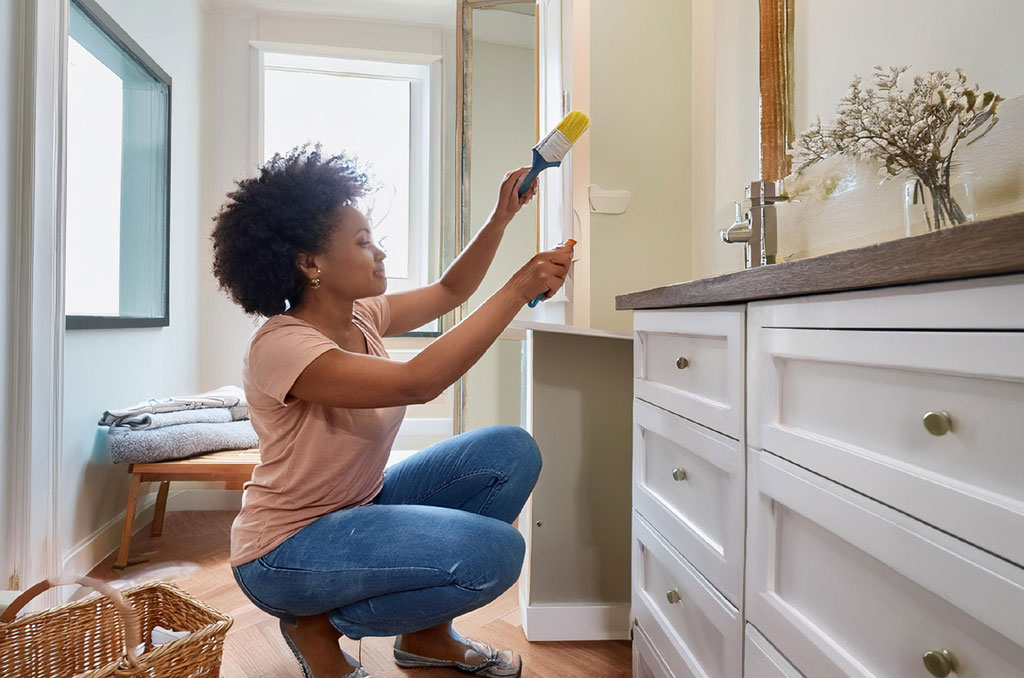10 Ways to Save Money on Your Bathroom Remodel
Renovating your bathroom is one of the most rewarding home improvement projects, offering a fresh, stylish, and functional space to enjoy daily. However, it’s no secret that bathroom remodels can be expensive. Between fixtures, tiles, and labor, the costs can quickly escalate, leaving many homeowners feeling overwhelmed. The good news? A stunning bathroom makeover doesn’t have to come with a hefty price tag.
The key to a budget-friendly bathroom remodel lies in smart planning and prioritizing your changes. By focusing on what matters most, sourcing affordable materials, and embracing cost-effective upgrades, you can achieve a beautiful transformation without stretching your finances. Even beginners can tackle a remodel with confidence using a few savvy strategies.
Whether you’re dreaming of a spa-like retreat or simply refreshing an outdated space, there are plenty of ways to save money without sacrificing quality or style. From reusing existing features to choosing water-saving fixtures, each step you take can add up to substantial savings while still delivering impressive results.
This guide explores 10 practical ways to cut costs during your bathroom remodel. These tips are designed to help you make informed decisions, find hidden savings, and bring your vision to life on a budget. So, let’s dive into the art of cost-effective remodeling and discover how to turn your bathroom into the space you’ve always wanted—without breaking the bank.
Whether you’re a DIY enthusiast or hiring professionals, these money-saving tips will empower you to maximize your budget and create a bathroom you’ll love. Ready to get started? Let’s unlock the secrets to an affordable bathroom remodel!
 |
1. Set a Realistic Budget and Stick to It
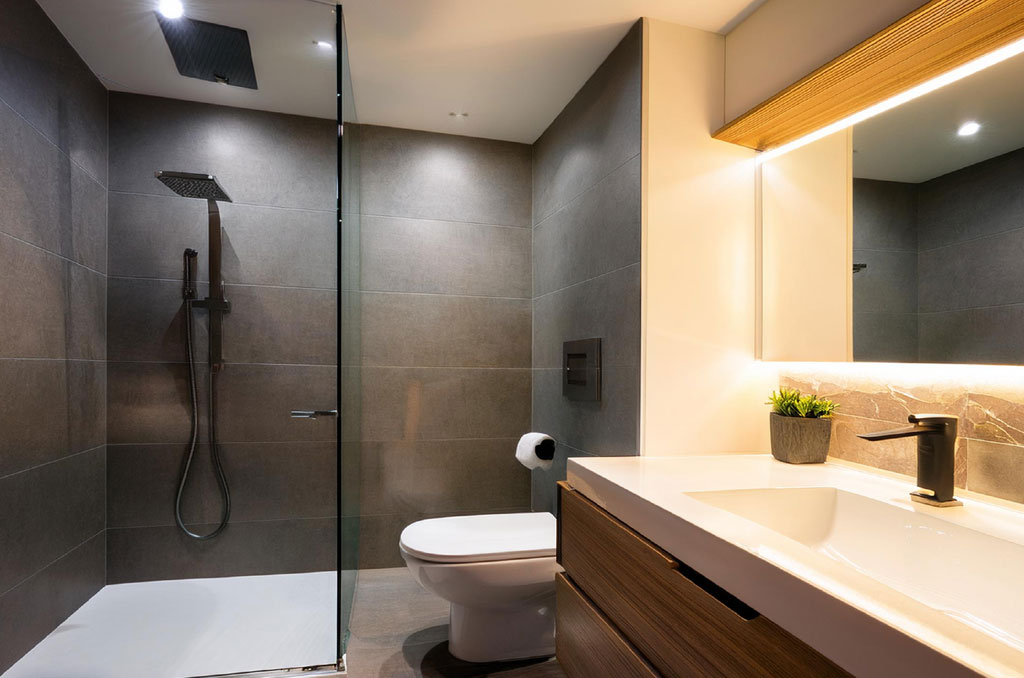 Setting a realistic budget is the foundation of a successful and cost-effective bathroom remodel. Before diving into your project, take the time to understand your financial limitations and outline what you’re willing to spend. This process helps you define clear boundaries, ensuring you don’t overspend or encounter financial stress midway through your renovation. Start by researching typical costs for bathroom remodels in your area, including labor, materials, and potential unforeseen expenses.
Setting a realistic budget is the foundation of a successful and cost-effective bathroom remodel. Before diving into your project, take the time to understand your financial limitations and outline what you’re willing to spend. This process helps you define clear boundaries, ensuring you don’t overspend or encounter financial stress midway through your renovation. Start by researching typical costs for bathroom remodels in your area, including labor, materials, and potential unforeseen expenses.
Once you have an overall estimate, break it down into categories. Allocate funds for major expenses such as plumbing, fixtures, tiles, and labor, while reserving a contingency budget for unexpected costs—typically around 10–15% of your total budget. This buffer ensures you’re prepared for surprises like outdated wiring or hidden water damage. Being meticulous with your budget division allows you to see where your money is going and prioritize areas where you can splurge or save.
Sticking to your budget requires discipline and thoughtful decision-making. One effective strategy is to focus on high-impact changes while avoiding unnecessary upgrades. For example, if your plumbing system is in good condition, avoid costly relocations of fixtures like toilets or bathtubs. Instead, use that portion of your budget for features that enhance aesthetics and functionality, such as new lighting or a modern vanity.
Tracking expenses throughout the project is equally important. Keep a running tally of your costs, and compare them with your initial plan regularly. This will help you identify areas where you might be overspending and make adjustments before it’s too late. Additionally, communicate your budget with contractors or suppliers upfront to avoid upselling and ensure they stay within your financial limits.
Ultimately, a well-thought-out budget not only keeps your finances in check but also empowers you to make smarter choices during the remodel. By knowing where to cut costs and when to invest, you can strike the perfect balance between affordability and quality, creating a bathroom that meets your needs without breaking the bank.
2. Reuse Existing Features When Possible
Reusing existing features is one of the smartest ways to cut costs during a bathroom remodel without sacrificing style or functionality. Often, homeowners overlook the potential of what they already have, opting to replace everything, which can quickly inflate the budget. Instead, take stock of your current fixtures, cabinetry, and layout to determine what can be salvaged or refreshed rather than replaced. This approach not only saves money but also reduces waste, making your remodel more environmentally friendly.
Cabinets and vanities, for instance, are often structurally sound but may look outdated. Instead of purchasing a brand-new unit, consider refinishing or repainting your existing cabinets. A fresh coat of paint, updated hardware, or the addition of a new countertop can completely transform their appearance at a fraction of the cost. Similarly, if your bathtub or sink is functional but showing signs of wear, refinishing them can restore their look and extend their lifespan, avoiding the expense of a full replacement.
Keeping the existing bathroom layout is another impactful way to save money. Relocating plumbing fixtures like toilets, sinks, or showers can significantly increase labor costs, as it requires rerouting pipes and potentially altering the subfloor. By working with your current layout and focusing on cosmetic upgrades, you can achieve a dramatic transformation while maintaining budget-friendly simplicity.
Finally, assess whether decorative elements such as mirrors, towel racks, or light fixtures can be reused with minor updates. Sometimes, a good cleaning, a new frame, or updated bulbs can give these items a fresh look. Reusing existing features not only saves money but also helps retain the character of your bathroom while making the remodel more personalized and sustainable.
3. Focus on High-Impact Areas
Focusing on high-impact areas during a bathroom remodel allows you to maximize visual and functional improvements without overspending. By prioritizing changes that make the biggest difference, you can create a polished and updated look while staying within your budget. This approach is especially beneficial for beginners who may feel overwhelmed by the scope of a remodel and need a clear direction to start.
One of the most impactful areas to address is lighting. Proper lighting can make even an older bathroom look fresh and inviting. Consider upgrading outdated fixtures to modern, energy-efficient options. Layered lighting, such as combining overhead fixtures with wall sconces or under-cabinet lighting, not only enhances the aesthetic appeal but also improves functionality. These changes are relatively affordable yet dramatically alter the room’s ambiance.
Another high-impact area is the hardware and accessories. Replacing drawer pulls, cabinet knobs, towel bars, and faucets with sleek, contemporary designs is a cost-effective way to modernize the space. Opt for cohesive finishes, such as brushed nickel or matte black, to give your bathroom a more cohesive and polished appearance. These small changes can have a surprisingly large effect on the overall feel of the room.
Finally, focus on surfaces that draw the most attention, such as the vanity top, shower area, or flooring. If your budget allows, splurge on a single standout feature like a quartz countertop or a stylish tile backsplash. For floors, vinyl or laminate options can mimic the look of high-end materials like wood or stone while being much more affordable. By prioritizing these high-impact areas, you can achieve a fresh, upgraded look without the need for a complete overhaul.
4. Source Materials Wisely
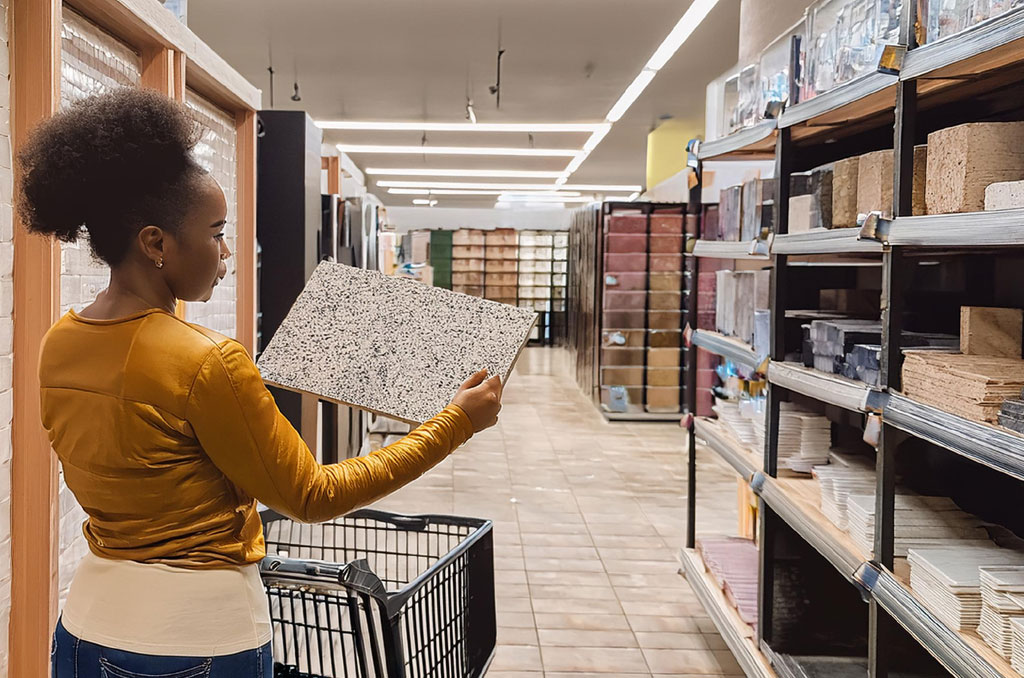 Sourcing materials wisely is essential for keeping your bathroom remodel on budget while ensuring quality and durability. By taking the time to explore affordable options and thinking creatively, you can save significantly on expenses without compromising the final look and functionality of your bathroom. This strategy is particularly helpful for beginners, as it allows you to allocate funds toward high-priority areas.
Sourcing materials wisely is essential for keeping your bathroom remodel on budget while ensuring quality and durability. By taking the time to explore affordable options and thinking creatively, you can save significantly on expenses without compromising the final look and functionality of your bathroom. This strategy is particularly helpful for beginners, as it allows you to allocate funds toward high-priority areas.
Start by comparing prices across multiple suppliers, including big-box stores, local hardware shops, and online retailers. Seasonal sales, clearance events, and discount outlets are excellent opportunities to find high-quality materials at reduced prices. Additionally, look for overstock or discontinued items, which can often be purchased at a fraction of their original cost. If you’re working with a contractor, ask if they have access to trade discounts or leftover materials from previous projects.
Consider alternative materials that offer the same aesthetic as high-end options but at a lower cost. For instance, vinyl flooring can mimic the appearance of wood or tile without the associated expense. Similarly, laminate or cultured marble countertops can provide a sleek, modern look for less than natural stone. These budget-friendly substitutes are durable and stylish, making them a practical choice for a remodel.
Finally, don’t overlook the potential of secondhand or salvaged materials. Habitat for Humanity ReStores, thrift shops, and online marketplaces like Facebook Marketplace or Craigslist often have gently used or surplus items, such as sinks, vanities, and mirrors, at a fraction of retail prices. With a little creativity, these finds can add character and charm to your bathroom. By sourcing materials wisely, you can achieve a high-end finish on a modest budget, making your remodel both cost-effective and rewarding.
5. Opt for Paint Over Tiles
Choosing paint over tiles is a budget-friendly strategy that can dramatically cut costs during your bathroom remodel while still delivering stunning results. Tiles, though beautiful and durable, are among the most expensive materials for bathroom walls and floors, especially when factoring in professional installation costs. Paint offers an affordable and versatile alternative, allowing you to refresh your bathroom’s look without breaking the bank.
One of the key benefits of using paint is its versatility. Modern moisture-resistant and mold-inhibiting paints are specifically designed for bathrooms, making them durable even in high-humidity environments. You can experiment with colors and finishes to create a clean, polished look. For instance, a satin or semi-gloss finish not only adds a subtle shine but also makes walls easier to wipe down and maintain, perfect for areas near sinks and vanities.
To maximize the impact of painted walls, focus on areas that don’t experience constant water exposure, such as above the sink or around the vanity. In the shower or bathtub area, where tiles are essential for water resistance, consider using a smaller amount of tile and leaving the rest of the walls painted. This combination reduces tile costs while maintaining functionality. Additionally, you can use paint to add character through accent walls or creative patterns, mimicking the effect of expensive designer tiles.
Opting for paint over tiles also makes future updates easier and more affordable. Unlike tiles, which require significant effort and expense to replace, paint can be refreshed with minimal cost and effort whenever you want a change. This flexibility allows you to stay on-trend or update your bathroom’s style without committing to a long-term investment. By strategically using paint in your remodel, you can save money while creating a personalized and visually appealing bathroom.
6. DIY Where You Can
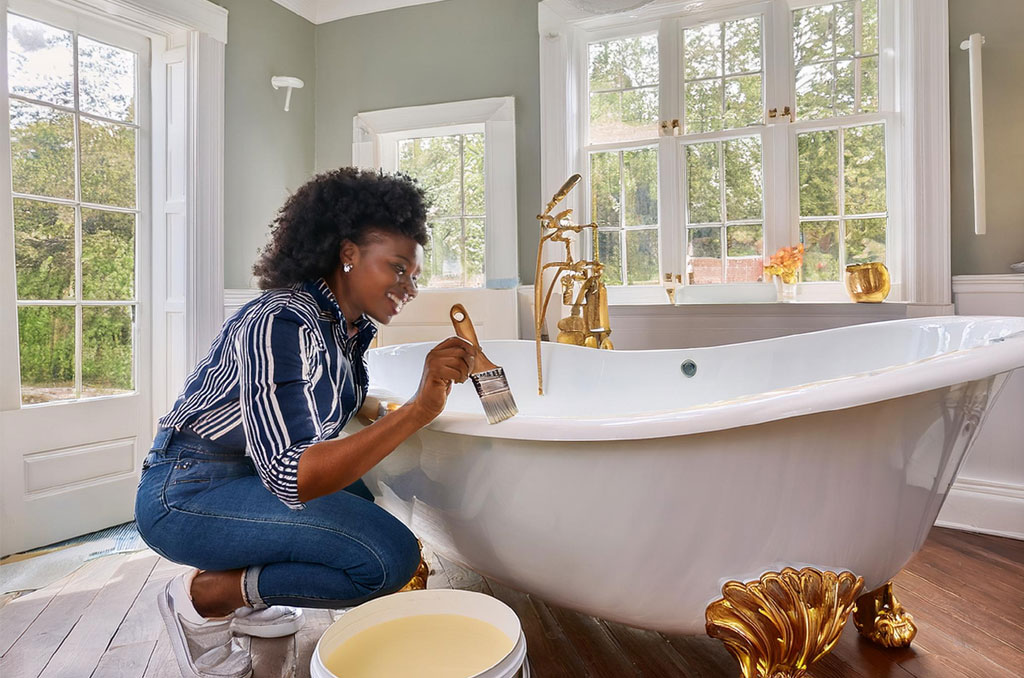 Taking a DIY approach where possible during your bathroom remodel is one of the best ways to save money. Labor costs can account for a significant portion of your remodeling budget, so tackling tasks you’re comfortable with can drastically reduce expenses. Even for beginners, many aspects of a remodel are manageable with the right tools, a bit of research, and patience.
Taking a DIY approach where possible during your bathroom remodel is one of the best ways to save money. Labor costs can account for a significant portion of your remodeling budget, so tackling tasks you’re comfortable with can drastically reduce expenses. Even for beginners, many aspects of a remodel are manageable with the right tools, a bit of research, and patience.
Start by identifying tasks that are low-risk and straightforward, such as painting walls, assembling flat-pack furniture, or installing simple fixtures like towel bars, mirrors, or shelving. These projects often require basic tools and minimal technical knowledge, making them ideal for DIY efforts. By handling these tasks yourself, you free up more of your budget for professional work on complex elements, like plumbing or electrical systems, where mistakes can be costly.
For slightly more advanced DIYers, consider tackling flooring installation, grouting tiles, or replacing hardware like faucets or showerheads. With access to online tutorials and guides, these tasks are often easier than they seem, especially if you’re using materials designed for DIY installation, such as peel-and-stick tiles or vinyl planks. Taking on these projects not only saves money but also gives you a sense of accomplishment and a deeper connection to your remodeled space.
However, it’s essential to know your limits. Attempting tasks beyond your skill level—such as major plumbing, electrical work, or structural changes—can lead to costly mistakes and safety hazards. For these jobs, hiring a professional is a wise investment. By combining strategic DIY efforts with expert help where needed, you can strike the perfect balance between saving money and achieving a polished, professional-quality bathroom remodel.
7. Choose Prefabricated Options
Choosing prefabricated options during your bathroom remodel is an excellent way to save money while achieving a high-quality, stylish look. Prefabricated items are mass-produced, ready-to-install components like vanities, countertops, or shower enclosures. They cost significantly less than custom-built alternatives and are readily available at most home improvement stores, making them a practical choice for budget-conscious homeowners.
Prefabricated vanities, for example, come in various sizes, styles, and finishes, allowing you to find one that suits your bathroom’s aesthetic without the expense of custom carpentry. Many include built-in storage and pre-installed sinks, saving you additional costs and labor. Similarly, prefabricated countertops, often made of durable materials like laminate or cultured marble, mimic the look of premium options such as granite or quartz at a fraction of the price.
Shower and tub enclosures are another area where prefabricated solutions shine. A one-piece or modular unit is not only more affordable than custom-tiled showers but also easier and quicker to install, which can save on labor costs. These units are designed for durability and water resistance, offering a sleek and modern appearance without the need for intensive maintenance.
By choosing prefabricated options, you can streamline your remodel and avoid delays often associated with custom orders. These ready-made solutions are ideal for beginners, as they simplify the planning and installation process. While customization may offer a unique touch, the cost savings and convenience of prefabricated items make them a smart choice for anyone looking to maximize their remodeling budget without sacrificing quality or style.
8. Shop Secondhand or Repurpose Items
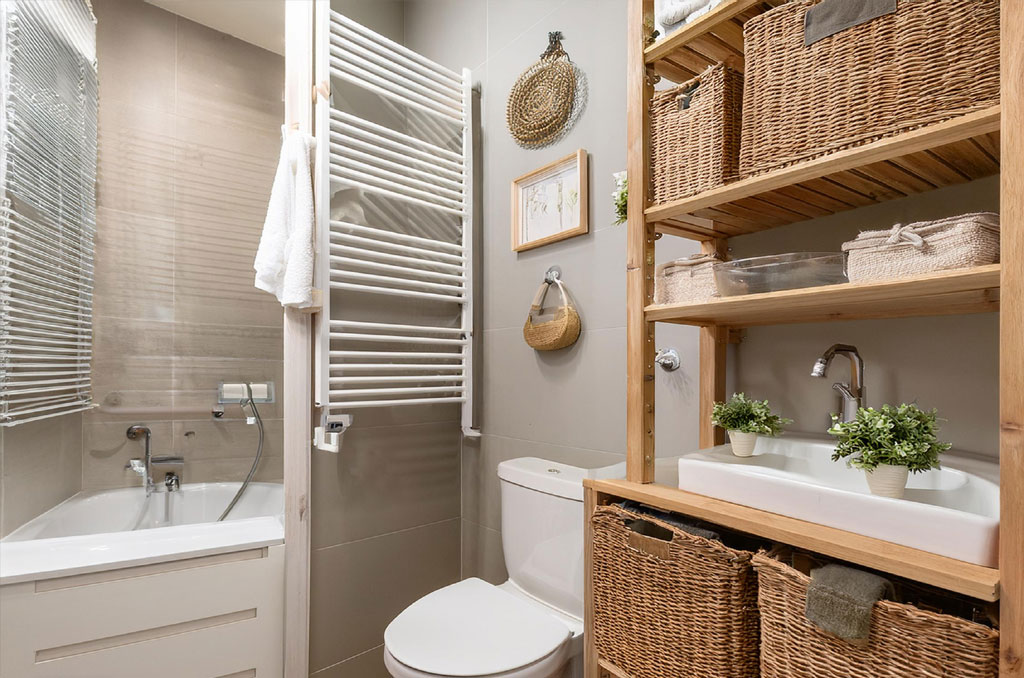 Shopping secondhand or repurposing items is a highly effective way to save money during a bathroom remodel while adding unique character and style to your space. Many homeowners are surprised at the quality and value of secondhand fixtures and materials available through thrift stores, online marketplaces, or local salvage shops. These sources offer everything from sinks, mirrors, and lighting fixtures to tiles, cabinets, and vintage bathroom accessories, often at a fraction of their original retail price.
Shopping secondhand or repurposing items is a highly effective way to save money during a bathroom remodel while adding unique character and style to your space. Many homeowners are surprised at the quality and value of secondhand fixtures and materials available through thrift stores, online marketplaces, or local salvage shops. These sources offer everything from sinks, mirrors, and lighting fixtures to tiles, cabinets, and vintage bathroom accessories, often at a fraction of their original retail price.
One of the best places to start is Habitat for Humanity’s ReStores, which sell donated building materials, including bathroom essentials, at heavily discounted rates. You can often find high-quality items such as gently used vanities, mirrors, and even unused tile or flooring. Online platforms like Facebook Marketplace, Craigslist, and eBay also provide opportunities to purchase secondhand bathroom fixtures in excellent condition, sometimes for a fraction of the cost of new ones.
Repurposing existing items in your bathroom is another excellent way to save money. Instead of replacing your old cabinet, consider repainting it or swapping out outdated hardware to give it a fresh look. You can also take vintage or salvaged furniture pieces and convert them into functional bathroom storage. For example, a reclaimed wood dresser can be transformed into a stylish vanity with a new sink, or old wooden crates can be turned into unique shelving units. The key is to be creative and envision how these items can fit into your remodel.
By shopping secondhand or repurposing materials, you not only save money but also give your bathroom a one-of-a-kind, personalized touch. These sustainable practices can add warmth and charm to your remodel, all while reducing waste. Plus, with a little time and effort, you can often find pieces that are just as durable and attractive as new ones, making them a fantastic choice for budget-conscious remodelers.
9. Install Water-Saving Fixtures
Installing water-saving fixtures is a smart, cost-effective way to enhance the sustainability of your bathroom while lowering long-term utility costs. Upgrading to water-efficient products not only helps the environment but also results in savings on your water bill. The good news is that many modern fixtures designed to conserve water are affordable and easy to install, making them an excellent choice for budget-conscious remodelers.
One of the easiest and most impactful upgrades is replacing old toilets with low-flow models. Modern low-flow toilets use significantly less water per flush compared to older models, yet they maintain excellent flushing performance. Many models are also dual-flush, offering the option to use even less water for liquid waste. Although the initial cost may be higher than a standard toilet, the savings on your water bill over time make it a wise investment.
Similarly, upgrading your showerhead to a low-flow version can have a big impact on water usage. Newer, high-efficiency showerheads use less water while maintaining good pressure, making for a luxurious shower experience without the high water costs. You can find high-quality, affordable options in a variety of styles and finishes, allowing you to maintain both function and design in your remodel.
Finally, faucets with water-saving aerators are another simple yet effective upgrade. These aerators reduce the flow of water without affecting the pressure, offering a practical solution for sinks, bathtubs, and shower areas. Many water-saving faucet models are available at budget-friendly prices and can be easily installed or replaced with minimal effort. By incorporating water-saving fixtures into your bathroom remodel, you not only create a more eco-friendly space but also enjoy ongoing savings that contribute to the overall cost-effectiveness of your project.
10. Keep It Simple
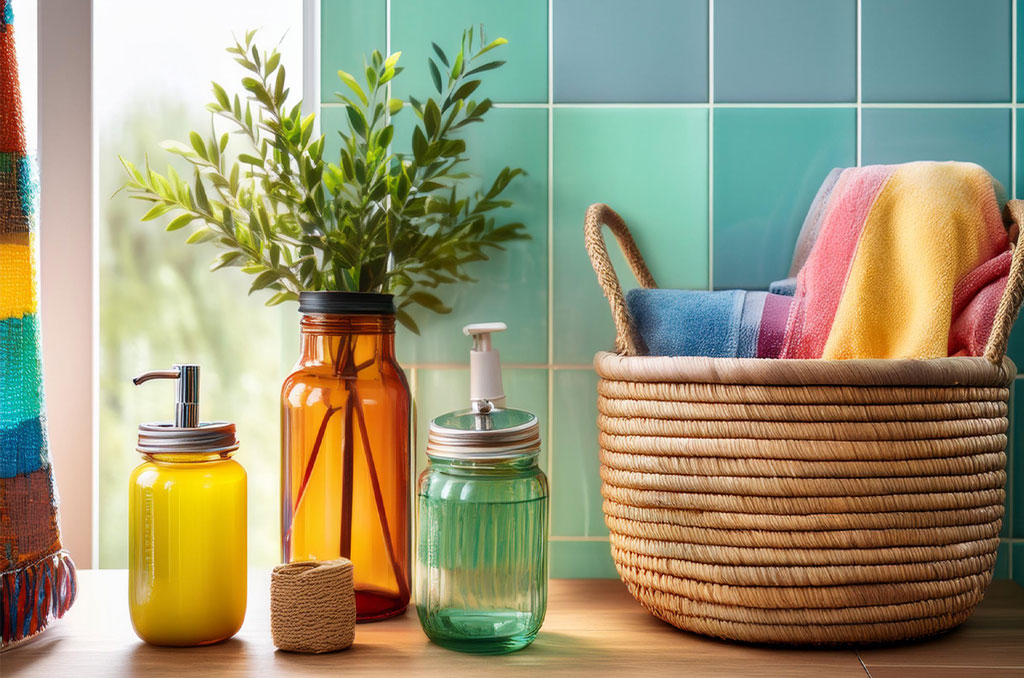 Keeping your bathroom remodel simple is one of the most effective ways to stay within your budget while still achieving a beautiful, functional space. Simplicity doesn’t mean sacrificing style; it simply involves being strategic about the choices you make and focusing on what truly matters. The more complex and customized your remodel, the higher the costs will likely be. By sticking to a straightforward approach, you can avoid unnecessary expenses without compromising on the overall design.
Keeping your bathroom remodel simple is one of the most effective ways to stay within your budget while still achieving a beautiful, functional space. Simplicity doesn’t mean sacrificing style; it simply involves being strategic about the choices you make and focusing on what truly matters. The more complex and customized your remodel, the higher the costs will likely be. By sticking to a straightforward approach, you can avoid unnecessary expenses without compromising on the overall design.
A great place to start is by minimizing the scope of the project. Rather than completely gutting the room or making major structural changes, focus on refreshing the existing layout and making small, impactful upgrades. For example, instead of tearing out the whole tile floor, consider patching or refinishing sections that need attention, or apply new grout to make the old tiles look fresh again. This simple approach can still give the room a makeover without the need for a full overhaul.
Another way to keep things simple is by choosing timeless, classic designs over trendy, high-maintenance features. Opting for neutral colors, standard-size fixtures, and durable, easy-to-clean materials can help you create a bathroom that is both stylish and functional for years to come. Trends come and go, but simple choices like white subway tiles, a sleek pedestal sink, or a minimalist mirror never go out of style, offering long-lasting appeal without frequent updates.
Finally, simplify the number of changes you make. Instead of overloading the bathroom with numerous upgrades, prioritize the key elements that will make the biggest difference, such as new lighting, fresh paint, or a modern vanity. This streamlined approach ensures that you stay within your budget while achieving the transformation you desire. By embracing simplicity in your remodel, you avoid overcomplicating the project, saving both time and money while still achieving an elegant and efficient bathroom design.
Final Thoughts
A bathroom remodel doesn’t have to break the bank. By being strategic with your upgrades, sourcing affordable materials, and focusing on essentials, you can create a beautiful, functional space within your budget. Remember, small changes can make a big difference. Start planning your remodel today!

